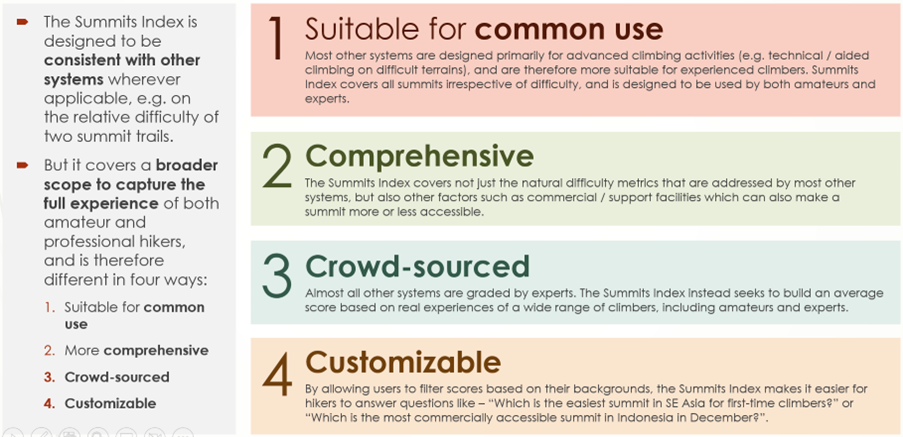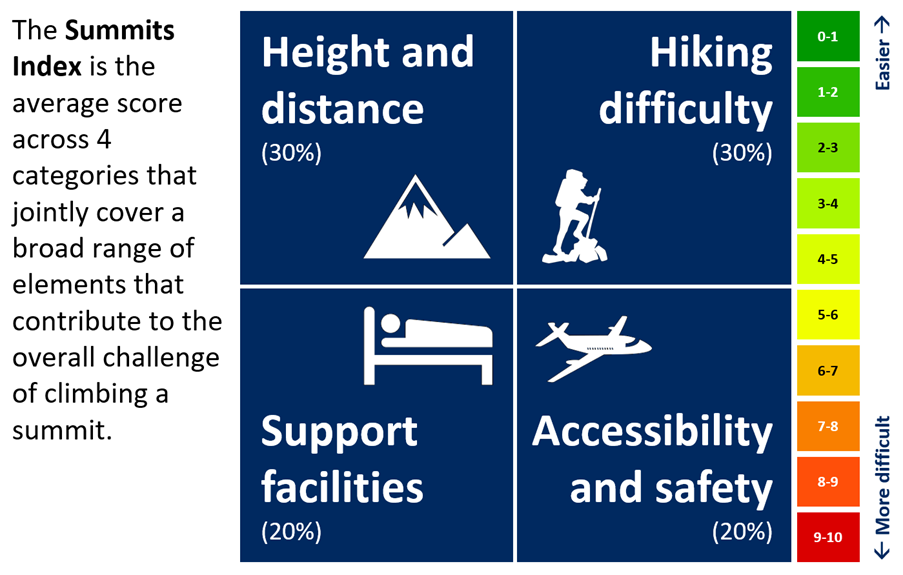Quick Answers: What is the Summits Index?
Summits.com has developed a unique way to communicate climbing difficulty of a summit to help amateur climbers, trekkers, and hikers. We're calling it the Summits Index.
Compared to other climbing difficulty indexes is an amateur-friendly, broad, crowd-sourced, and customisable, and encompasses the physical and technical challenges of the mountain, as well as accessibility and support facilities.
Our ambition is for every summit in the world to be indexed and scored - even that neighborhood hill behind your house - making it easier for everyone to discover experiences that may not be very well known yet.



